Now is the time for strategy and action, say Kellie Payne, director, Bates Smart, and Dr Caroline Burns, founder, Workplace Revolution. And it all begins with asking the right questions.

From the bushfires to the pandemic, the past year has truly impacted every aspect of people’s lives. From an understandably bewildered place it looked like the predictions about how COVID-19 will fundamentally change everything were warranted. But this isn’t the time for knee-jerk reactions. It’s a time for strategy and action.
Nowhere is that sentiment more prevalent than in our return to workplaces. Payne, who drives workplace strategy at Bates Smart, along with Dr Caroline Burns, founder of Workplace Revolution, lent their insights on the approaches and strategies that will define the workplace for 2021. Inclusivity, transition and adaptability underpin our moment where a sputtering return to offices is supported by the remote work that has come to define much of how we work now.

Publicis Groupe engaged Bates Smart to integrate its collective workplace into the new ‘Workshop’ building in Pyrmont.
But what does inclusivity, transition and adaptability mean on the ground and in the trenches? How can we turn the challenges of the past year into opportunities for new ways of working? Both Payne and Burns begin with understanding what just happened. Context is king when trying to build approaches and strategies that will bring us forward. Much of what we’ve seen from the past year in terms of work has been an acceleration. Has the past year created any situations that are truly novel, or are we simply seeing an amplification of existing conditions?
Though remote work isn’t new, the scale and speed of the shift has led to the need for trust. Payne notes, “Trust is coming to the forefront. Inclusivity is really talking about trust. Businesses had to learn to trust their employees. They made work happen even when the businesses couldn’t. We need to start treating people like grown- ups. This is about workplace design not being so rules-driven.”
Burns identifies the same imperative addressing the newness of the moment as a shift in mindset. “There’s a new awareness. Activity-based working has lots of choice and perceived control, but most people are on autopilot every day and don’t exercise that choice intelligently – or feel trusted to do so. Now people have started to become aware of the work conditions that make them successful.”

The open flexible floorplate features built space away from the perimeter offering natural light and views to staff.
This all comes back to understanding who we’re designing for, and what better way to do that than to involve them in the design process? Burns notes again the importance of context when designing spaces with tech that are inclusive and collaborative. “It requires understanding how that team works. Are they all in the office, all out, or in between? The office needs to be a great collaborative experience for those in the space, but one that doesn’t make those at home feel like second class citizens.”
According to her, it starts with approach before strategy. “The most innovative and courageous clients are starting to think about the workplace as a personalised and adaptive approach, as a system.” Burns sees a holistic approach by the business that isn’t project dependent, allowing for the right questions – like how we might best refresh and rejuvenate – to frame and underpin the best strategies.
Finding the right questions seems paramount. Payne elaborates, “There are new questions to ask that help determine work style. How much autonomy do you have? Is your day predictable? How quickly does your team have to deliver?” Inherent in both of their approaches is the idea that responding to change requires trial, error, failure and above all good questions.

Winter-gardens situated at each end of the building draw staff together and provide ventilation.
Armed with good questions, the granular aspects of blended workplaces seem more surmountable. Burns is constantly asking how we can amplify the positives of the office. Collaboration and creativity get thrown around a lot, but both Payne and Burns have caveats.
In Bates Smart’s recent report on workplace strategy, Reimagining the Future: Insight on the Future of Our Workplaces and Our Cities, Payne found that while collaborative aspects may have dropped over the past year, there was a greater capacity for deep focus. Likewise, when people lament the lack of face-to-face interactions, Burns notes in-person discussions can often lead to ‘groupthink’. It’s clearly a time to question the fundamental things we take for granted about work.

Workplace strategy diagram, courtesy of Workplace Revolution.
Particular challenges and solutions for blended workspaces are readily understandable – right-sizing the office, flexible walls, attention to audio surroundings, connecting the office, home and in between. But on a deeper level, what we might be looking for is a better way to support better ways to work.
And more than any checklist or set of office must-haves is the idea that we need to collectively build our ways to work. For Burns, designers and architects are in a tough place. “Now, every inch of an office needs to perform. We can’t fall to the allure of Instagrammable office designs when the focus should be on how a workplace performs, over how it photographs. Focusing on performance over aesthetic requires in-depth understanding of how a company works now and wants to work in the future.”


On the back of that Burns notes: “There’s only so much we can do with tables and chairs. We’re in a transition to a new industrial age, to a digital economy.” Payne similarly notes, “We came to a hygiene crisis in the middle of a sustainability crisis.” Recalling the devastation of the bushfires and how that disrupted work can help put the year in perspective.
“We need to understand that this is going to be a long-term adaptation,” says Payne. “Businesses will try; some things will work, and some won’t. That’s the challenge for design, we’re engaged for a certain amount of time and we’re supposed to have solved the problem. So, we need to make sure we’re delivering clients an infrastructure in which they can continually evolve.”
Solving for the continual changes in workplace will require the elements most workplaces try to cultivate – collaboration, focus and creativity. At the same time, individual wellness and group sustainability are inextricably linked, to be a more personal version of our collective wellbeing. As we work to develop workspaces that solve for rejuvenation and regeneration, while helping businesses more clearly define how they work, it’s a moment where inclusivity, transition and adaptability couldn’t be more important.
Progressive workplace strategy is built on change, but more than ever, it’s everyone’s responsibility and opportunity.
workplacerevolution.org | batessmart.com

Content correction: at the time it was originally published on indesignlive.com, this article contained inaccuracies, misrepresenting Dr. Caroline Burns, founder, Workplace Revolution, as a workplace strategist for Bates Smart. Indesignlive.com has since amended the text with Dr. Caroline Burns’ correct attribution, and apologises sincerely for the error.
INDESIGN is on instagram
Follow @indesignlive
A searchable and comprehensive guide for specifying leading products and their suppliers
Keep up to date with the latest and greatest from our industry BFF's!

At the Munarra Centre for Regional Excellence on Yorta Yorta Country in Victoria, ARM Architecture and Milliken use PrintWorks™ technology to translate First Nations narratives into a layered, community-led floorscape.

In an industry where design intent is often diluted by value management and procurement pressures, Klaro Industrial Design positions manufacturing as a creative ally – allowing commercial interior designers to deliver unique pieces aligned to the project’s original vision.
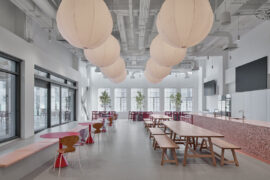
The new headquarters for Omnicom in Melbourne’s CBD sees heritage re-invigorated with style and finesse.

The Australian Institute of Architects has unveiled 43 projects representing the pinnacle of contemporary design, with winners addressing housing, climate and affordability crises through innovative solutions.
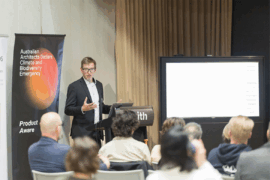
In a landscape clouded by data and greenwash, Product Aware offers architects and designers a common language for sustainability. Embraced by suppliers – including Milliken – it is setting a new benchmark for trust and bringing clarity and accountability to material specification.
The internet never sleeps! Here's the stuff you might have missed
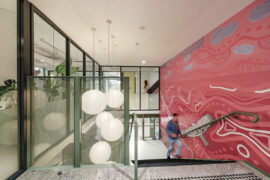
From radical material reuse to office-to-school transformations, these five projects show how circular thinking is reshaping architecture, interiors and community spaces.
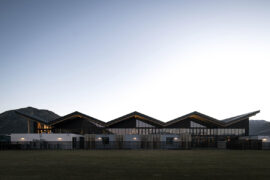
Warren and Mahoney’s The Mill in Queenstown blends architecture, wellbeing and landscape, creating a transparent training facility.
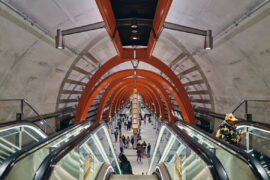
A collaboration between Hassell, Weston Williamson + Partners (WW+P Architects) and Rogers Stirk Harbour + Partners (RSHP) sees the opening of five new underground stations.

In an industry where design intent is often diluted by value management and procurement pressures, Klaro Industrial Design positions manufacturing as a creative ally – allowing commercial interior designers to deliver unique pieces aligned to the project’s original vision.